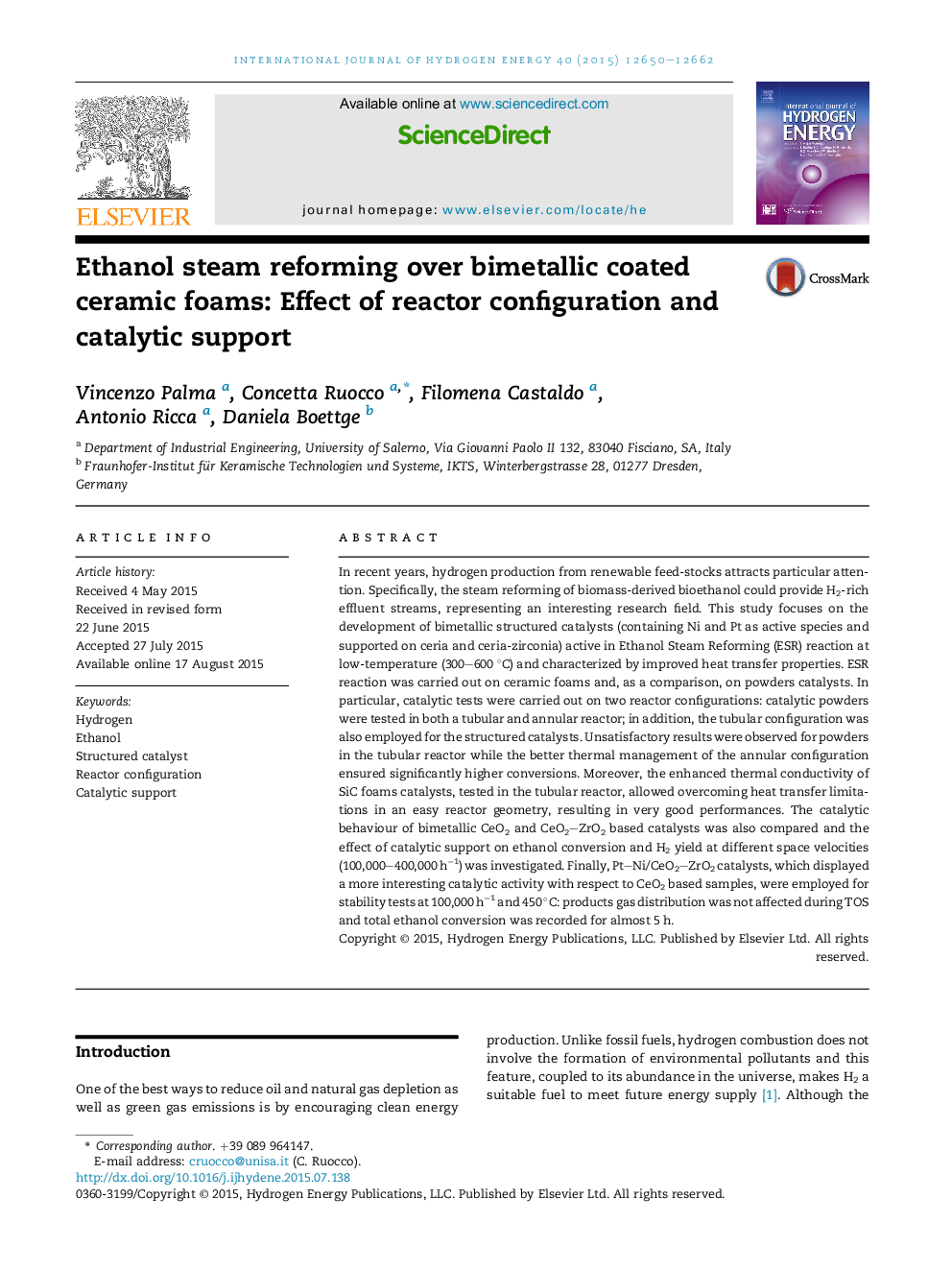| Article ID | Journal | Published Year | Pages | File Type |
|---|---|---|---|---|
| 1278783 | International Journal of Hydrogen Energy | 2015 | 13 Pages |
•Powders catalysts tested in tubular and annular reactors showed different catalytic behaviour.•SiC foam catalysts, coated with metals, allowed overcoming typical heat transfer limitations of tubular reactor.•The improved OSC of CeO2–ZrO2 based samples assured high activity and stability even at low contact times.
In recent years, hydrogen production from renewable feed-stocks attracts particular attention. Specifically, the steam reforming of biomass-derived bioethanol could provide H2-rich effluent streams, representing an interesting research field. This study focuses on the development of bimetallic structured catalysts (containing Ni and Pt as active species and supported on ceria and ceria-zirconia) active in Ethanol Steam Reforming (ESR) reaction at low-temperature (300–600 °C) and characterized by improved heat transfer properties. ESR reaction was carried out on ceramic foams and, as a comparison, on powders catalysts. In particular, catalytic tests were carried out on two reactor configurations: catalytic powders were tested in both a tubular and annular reactor; in addition, the tubular configuration was also employed for the structured catalysts. Unsatisfactory results were observed for powders in the tubular reactor while the better thermal management of the annular configuration ensured significantly higher conversions. Moreover, the enhanced thermal conductivity of SiC foams catalysts, tested in the tubular reactor, allowed overcoming heat transfer limitations in an easy reactor geometry, resulting in very good performances. The catalytic behaviour of bimetallic CeO2 and CeO2–ZrO2 based catalysts was also compared and the effect of catalytic support on ethanol conversion and H2 yield at different space velocities (100,000–400,000 h−1) was investigated. Finally, Pt–Ni/CeO2–ZrO2 catalysts, which displayed a more interesting catalytic activity with respect to CeO2 based samples, were employed for stability tests at 100,000 h−1 and 450 °C: products gas distribution was not affected during TOS and total ethanol conversion was recorded for almost 5 h.
